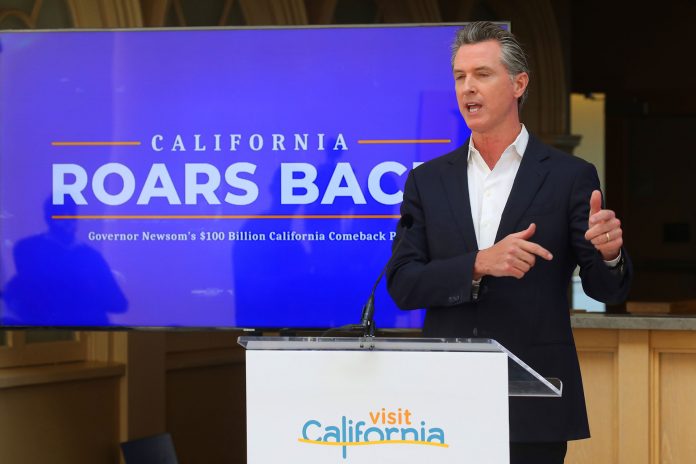
We’ve been waiting for this week for a long time.
After more than a year of complex, evolving rules governing where Californians can go and what we can do, on Tuesday, nearly all of them will go away.
California, the nation’s most populous state, will be one of the last to lift the bulk of its coronavirus restrictions. But that doesn’t mean we’ll immediately snap back into prepandemic life.
Here’s what you need to know to be prepared:
First, is California ready?
“We absolutely are,” said Dr. Kirsten Bibbins-Domingo, the vice dean for population health and health equity at the School of Medicine at the University of California, San Francisco.
The state’s low case rates have been stable, and the state’s vaccination rates are high overall.
But that doesn’t mean that Bibbins-Domingo is without worry.
There are still pockets where fewer people are vaccinated, which means that the virus — and particularly any virulent variants — could spread more easily through a given community.
“That’s why we can’t let our foot up on the push to vaccinate,” she told me.
Bibbins-Domingo said she was also nervous about the push to reopen without significant infrastructure in place to verify people’s vaccination status or ensure that vulnerable Californians who work in higher-risk settings, such as meatpacking plants or factories, are protected.
And finally, she said, as the world reopens, it’s imperative that public health departments continue to get support and funding to properly track outbreaks and monitor any new diseases.
“I don’t actually think that our new normal should be each person agonizing,” she said. “This is the job of public health officials to actually say we’re safe enough to open, and in the background we’re going to work to keep you safe.”
What is actually happening Tuesday?
The simple answer is that capacity restrictions on businesses, as well as physical distancing requirements, are going to be lifted. That means that, if the business allows it, you could go into a bar and sit at a stool right next to a stranger. You could take in a film in a packed movie theater and freely chomp on your popcorn. You could hit a dance floor, sing at a full church service, cheer at a baseball game.
From a government perspective, things are little more complicated.
While the whole point of declaring an emergency — as Gov. Gavin Newsom did in March 2020 — is to give officials flexibility to move quickly, winding down all the temporary regulations solidified in many intertwined executive actions will be a longer process, officials said in a briefing on Friday.
For example, the state suspended some training and licensing requirements for certain health care workers, as hospitals scrambled to deal with the surge of COVID-19 cases, and officials said it’s important not to yank the regulatory rug out from under people who may still be working in their pandemic roles.
But officials did take a significant step Friday: The state officially ended the order directing 40 million Californians to stay at home, which had been in place since last year. A new, much less stringent public health order will go into effect Tuesday.
Still, there may be some changes that could become permanent.
COVID has been a “great accelerant of change,” Dr. Mark Ghaly, the state’s health and human services secretary, said Friday. “What, if anything, makes sense to make permanent — those are important conversations that will have to happen in the weeks and months and years to come.”
So will I have to wear a mask?
If you’re fully vaccinated and you’re not working, probably not.
There are some exceptions, such as on public transit, in health care settings and indoors at K-12 schools, where everyone must wear a mask regardless of vaccination status.
Unvaccinated people must continue to wear a mask indoors — although businesses have the option to enforce that regulation as strictly as they want, or essentially not at all. (They will be required to post the rules, and patrons will “self-attest” that they are complying.)
Rules for masking up at workplaces fall under the purview of the state’s Occupational Safety and Health Standards Board, which has changed course multiple times, leading to some confusion.
Most recently, the board released another set of revised guidelines suggesting that fully vaccinated workers generally won’t have to wear masks, even if some of their co-workers are unvaccinated. (Unvaccinated workers will still have to mask up if they’re working with another person indoors or in a vehicle.)
But workers may not be able to fling off their masks Tuesday; those relaxed rules may not go into effect immediately, unless Newsom intervenes.
This article originally appeared in The New York Times.
Copyright 2021 The New York Times Company













